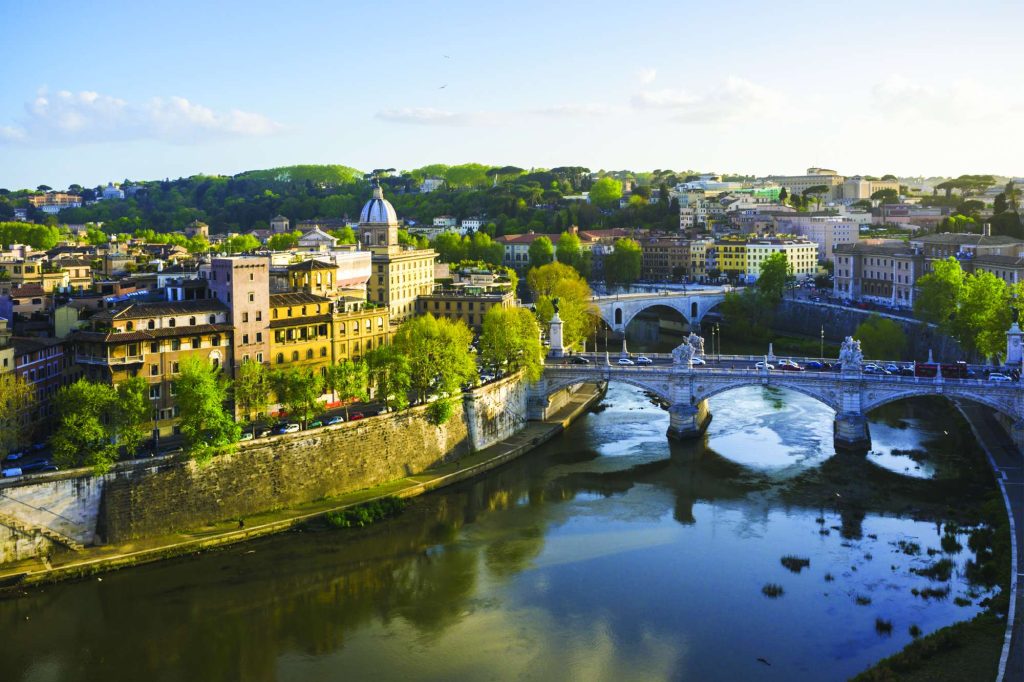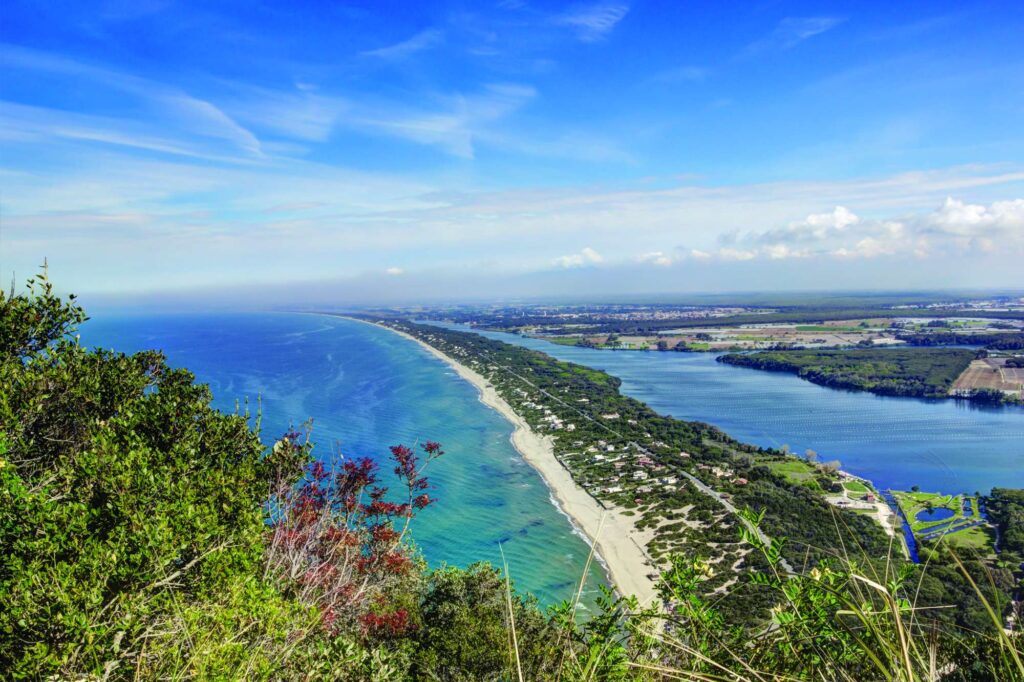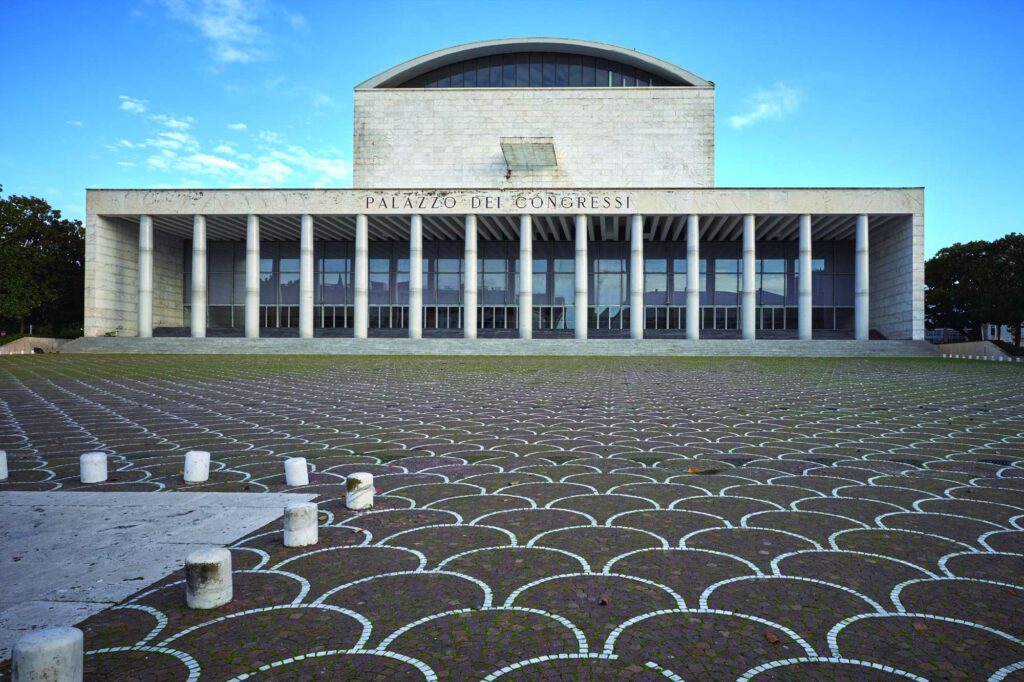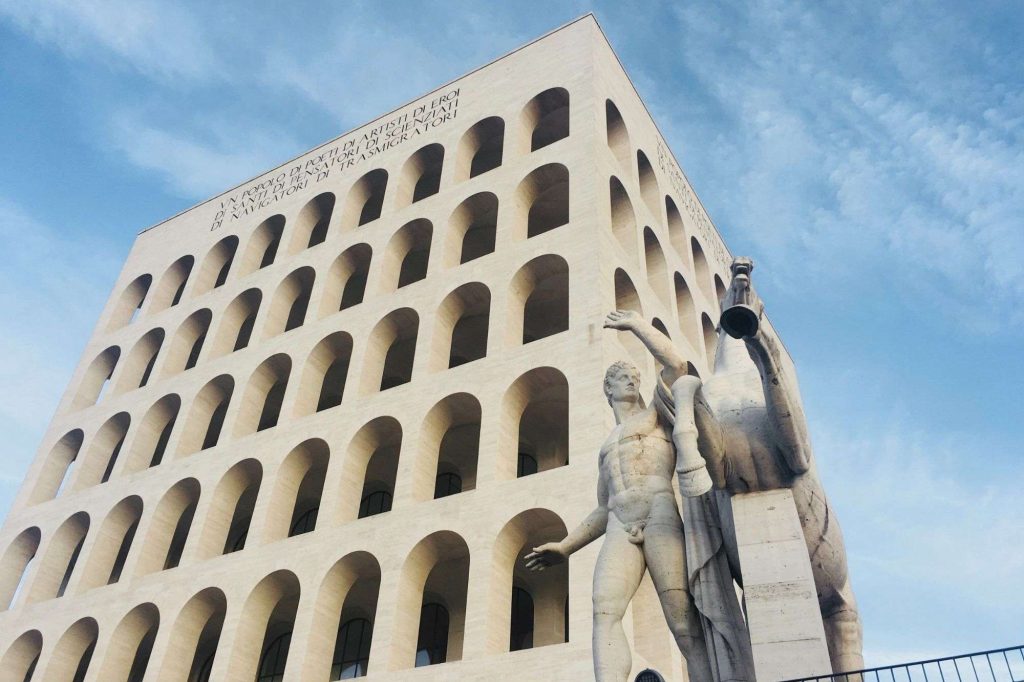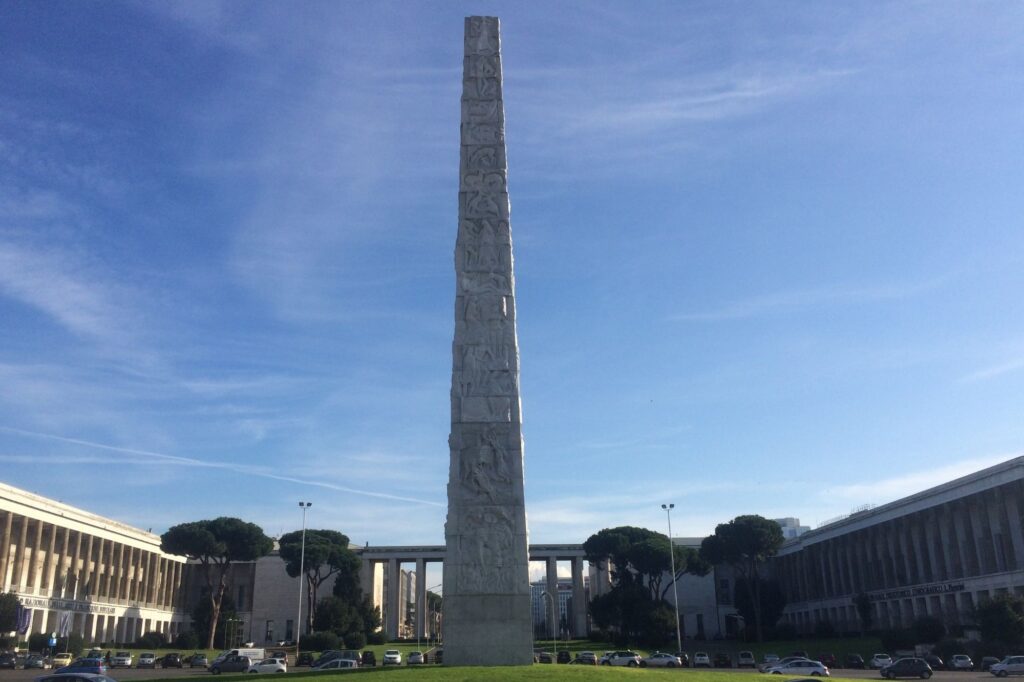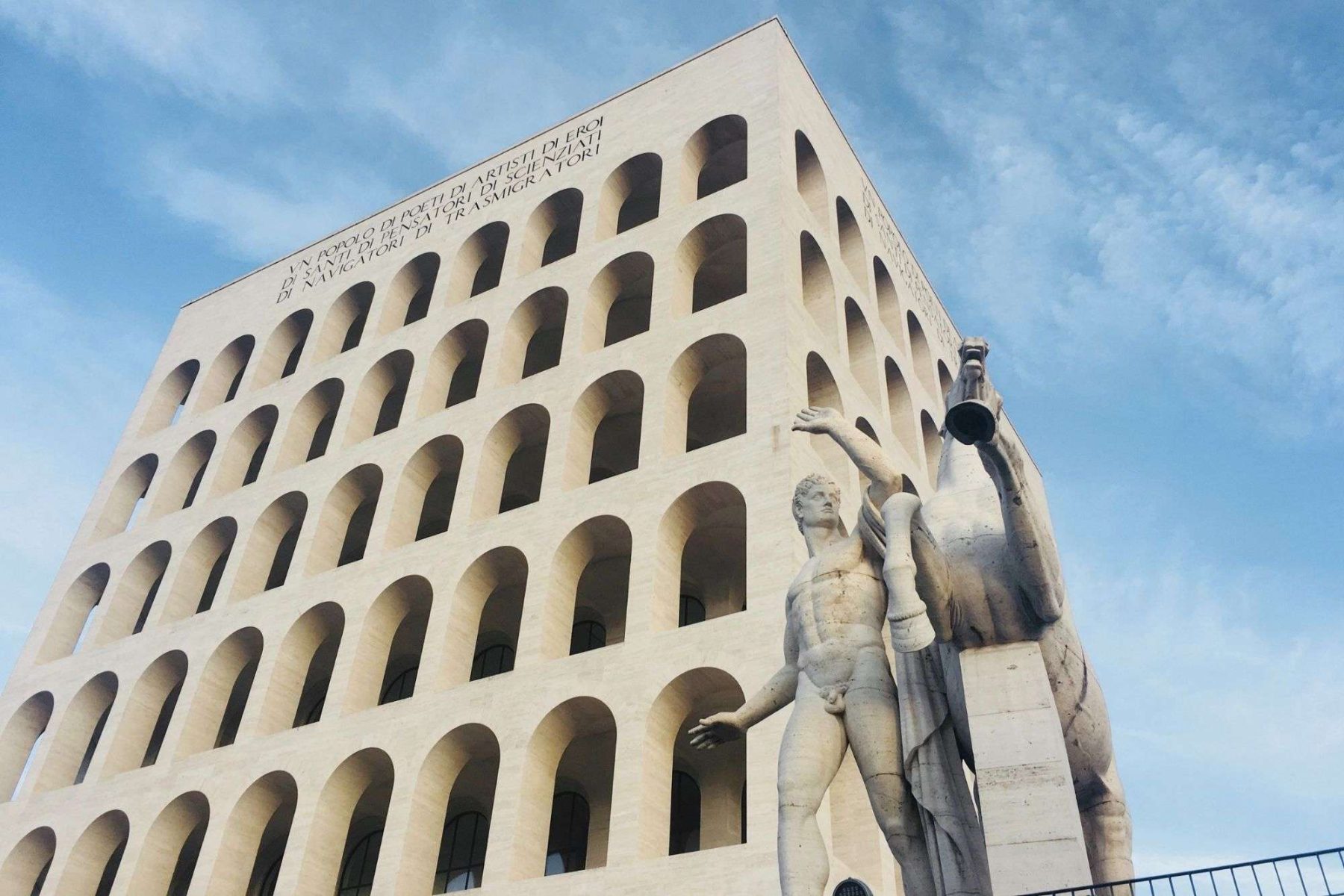
20th Century History Trip to Rome
4 Days from £540pp
Based on 40 students travelling with 4 teachers (free places)
All around the vibrant city of Rome, there is still evidence of its turbulent past with the effects of the rise and fall of Mussolini and the Fascist party imprinted on the city.
History students can develop their understanding of remarkable eras throughout Italy’s history with stops at Colosseo Quadrato, Circeo National Park, the Museum of the Liberation of Rome, and much more. As you explore Rome, you will visit key locations lifted straight from the pages of your textbooks to bring learning to life.
Below is an example itinerary showing what your visit to Rome could include. We also provide a fully bespoke service, and our internal Travel Specialists will help you design the perfect trip unique to your school.
What's included
- Return flights to Rome from Gatwick
- Hold luggage for all passengers
- 3 nights' accommodation
- Half board basis (breakfast and evening meals)
- Guide and/or tour assistant where specified
- All activities mentioned in the itinerary
- Our Covid Money-Back Assurance
Ask about our approach to Responsible Travel
We believe the benefits of travel should not be lost for the next generation. In order to protect this world we live in and also inspire a new group of young people to fight for our planet, we are developing an approach to Responsible Travel that is founded in facts, empowers young people to take action and involves suppliers at all levels in minimising negative impacts of travel.
We are committed to finding and implementing maintainable strategies which include developing teaching resources, offsetting carbon emissions, benefitting local economies, protecting local cultures and becoming ‘Plastic Clever’ travellers.
We can’t do it alone. Will you join us?
Responsible School Travel“Discover the World Education are a fantastic company to use as a full-time teacher when planning a trip. They make everything incredibly simple and totally minimise stress.”
Day
1
Free time in Rome
Upon arriving in Rome you will immediately get your first taste of the architecture and vibrant mix of culture that makes Rome the iconic urban metropolis it is known for being. You will have free time to get to know the city and perhaps see some of the iconic key sites of Rome.
After some time exploring the city, you will get your first taste of that tasty Italian cuisine before a good night’s sleep ready for your first full day in Rome.
Day
2
Mussolini‘s fascist vision
Day 2 begins in the EUR district, which is renowned for Fascist-era architecture. This area was initially dreamt up by Mussolini in the 1930s to celebrate 20 years of fascism by opening a grand new city centre. Now, 20th-century history and modern Roman life perfectly combine as alongside the buildings and statues of Mussolini’s imagination and artwork honouring the fascists even after their fall, is a range of high-end restaurants, the headquarters of Italian fashion house Fendi and even a filming location for some of Hollywood’s biggest blockbusters.
One of the star attractions of the district is the Colosseo Quadrato or Square Colosseum. Students will be in awe of this modern building, which is a masterpiece of rationalist architecture with its rows of 216 arches. The building was completed in 1943, just before the fall of the fascist party. For most of its history, the building stood unoccupied. Today, the building is the headquarters of Fendi and regularly hosts contemporary art exhibitions.
Next, you will visit Foro Italico, the renowned sports complex. Built between 1928 and 1938 as the Foro Mussolini (which means Mussolini’s Forum), was intended to be the jewel in fascist Italy’s bid to host the Summer Olympic Games of 1940 in Rome. This vision wouldn’t be carried out until 1960 when Rome did host the Olympics. Nowadays Foro Italico has not lost any of its draw, as it now hosts the Italian Open and Italy national rugby union team.
Here, students will also find Mussolini’s Obelisk. This huge marble structure is not only monumental for its height and weight, but it is also the only public commemoration of Mussolini, as when after the Second World War, all memorabilia of Mussolini was removed, it was impossible to delete the writings on the 36M high memorial.
The final stop of the EUR District, is another icon of the Fascist era, the Basilica of St Peter & Paul. Created for the World Exhibition (that never happened), the building started in 1939, but quickly halted because of the war and was not completed until 1955 and became a parish church three years later.
After a busy day, immersing yourself in the Fascist vision of the EUR District, you will have a chance to enjoy some delicious Italian cuisine!
Day
3
Circeo National Park
Founded in 1934, Circeo National Park was established by order of Mussolini, to preserve the last area of Pontine Marshes which were being reclaimed during this period. Led by the fascist government, the marshlands were drained and cleared to settle hundreds of families.
Students will learn all about the reclaiming of the marshlands in the Piana delle Orme land reclamation and the agriculture museum in the park. At the museum, the recreation of the building and vehicles set the scene and help to immerse students in their learnings.
One of the outcomes of this marshland being drained was that agriculture now thrives in the area. You will see this first hand at the Casearia Bianca buffalo dairy farm and vineyard tour where you will stop for lunch.
Next, students will get a chance to explore the sandy dunes of the Circeo Beaches, before heading to the coastal town of Sabaudia, a live example of one of the towns built on the reclaimed marshland, just an hour and a half south of Rome. The town features plenty of fascist architecture for students to explore.
It is time for your last taste of a beautiful Italian dinner ahead of your final day in Rome.
Day
4
Museum of the Liberation of Rome
After a few days of getting to really understand the fascist vision, it is time to see what came next by visiting the Museum of the Liberation of Rome.
That said, the building the museum stands in is also steeped in history. Previously home to the German Embassy’s Cultural Office, the German link does not stop there. In the first half of 1944, the SS used the building to torture members of the Italian Resistance. On 4 June 1944, the day of the Liberation of Rome, the population entered the building and freed the prisoners who remained.
Now, the museum remembers and educates on, not only the turbulent history of the building itself but also the second world war, fascist rule and the effect on the Roman people.
Bid farewell to Rome as you are transferred for your flight home.
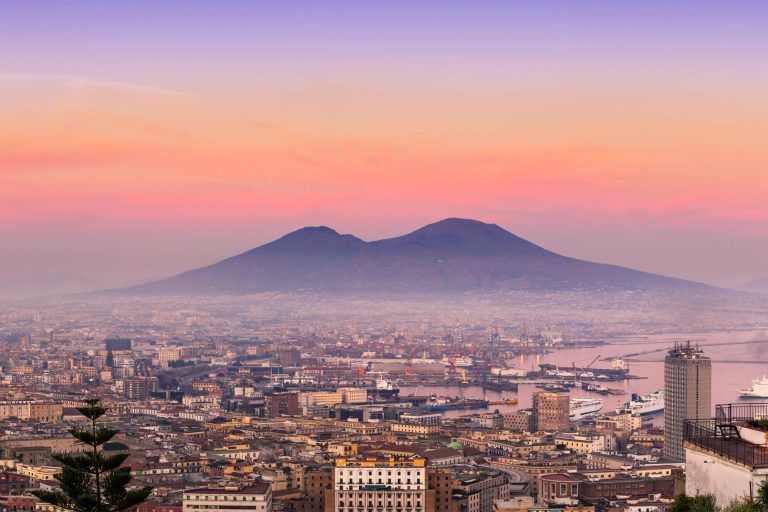
Introducing Italy’s ‘Big Three’ Volcanoes
Italy is one of the most tectonically active areas in Europe and home to world famous volcanoes that have impacted its people, shaped the landscape, influenced economic activities and increased our understanding of volcanoes.
View all blogs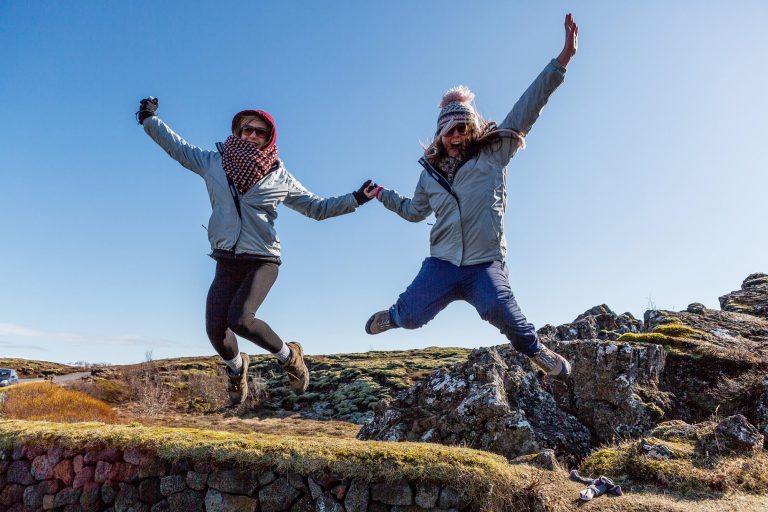
School Trip Planning Hub
We know that the real job of selling a school trip is down to you and your colleagues so we've collated some helpful resources for you to use to make sure you not only get the buy in from your students and their parents, but also that you have all the details you need to ensure a simple planning process.
Launching Your School Trip